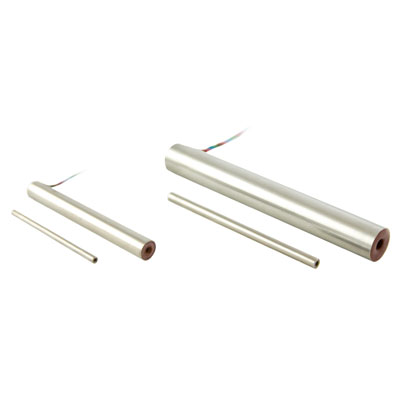How Do LVDT’s ‘Measure Up’ Against Competing Methods?
Written by transtek_admin on 07/27/2022

LVDT’s (linear variable differential transformers) were invented in 1936 by George B. Hoadley. They were developed as “…a system for the electrical transmission of intelligence at a distance”. These popular position sensors have evolved a bit since then. Today, they are used in a variety of industries from transportation and defense to commercial printing and power generation. LVDT’s are celebrated primarily for their accuracy and reliability. Though we do get questions occasionally on how they “measure up” against some of the more common alternative approaches to position sensing. These include linear potentiometers, magnetostrictive transducers, lasers and variable inductive transducers. So, which to choose? The answer usually lies in the requirements of the specific application. Let’s take a look at the specifics:
LVDTs vs Linear Potentiometers
Linear potentiometers function by producing resistance output that changes depending on the position of a slider or a wiper. When compared to LVDTs, they handle longer ranges, up to about 25 feet, and can be a little easier on the budget. One example of their use is measuring the movement of a hydraulic lift. While these potentiometers are easy to set up and use, they do come with a major drawback: a much shorter lifespan. This is due to how they are designed. The cable and rotary mechanism produces a lot of friction, which causes them to wear out quickly when compared to LVDTs. Further, their resolution is much lower.
LVDTS vs Magnetostrictive Transducers
A magnetostrictive transducer is higher tech device that is comprised of rigid wire which is made of magentostrictive material. Pulses of current are sent through the wire, thus creating a magnetic field. A magnetic level transmitter is integrated into the float. These components deliver very high accuracy much like an LVDT, are relatively easy to fit, and also have a long life. But warning, this comes with a fairly high price tag. Also, they are prone to damage due to shock or vibration. They should only be used in relatively stable, benign applications.
LVDTs vs Laser Displacement Sensors
Laser displacement sensors also offer contact free measurement by utilizing triangulation. It is applied by combining the position sensitive device with emitting element, which the detects the amount of displacement. They are great for measuring really long distances, boasting a longer range than linear potentiometers. They are relatively easy to install. As you can imagine, since they use laser technology, they are extremely precise. There are a few drawbacks as well. Most notably, they are very expensive, despite their prices dropping a bit more recently. They are not good for any applications where you have vapor, dirt or oil. Further, they require a really good flat target to lock into, which isn’t available in many situations.
LVDTs vs Variable Inductive Transducers
These transducers are closely related to LVDT’s. They look the same, and operate using a similar principle. However, variable inductive transducers have a single winding instead of multiple ones. They are relatively low in cost, coming in just a little less expensive than LVDTs, and can be smaller in size. The big tradeoffs? They don’t offer as much resolution, linearity or precision as LVDTs. They are also harder to install and use.
As you can see, choosing the ideal linear measurement solution often comes down to cost vs performance, and must take the application heavily into account. LVDTs are often the winners for shorter and medium range measurement uses. They strike a great balance between accuracy, resolution, longevity, budget and ease of use. Also, LVDT’s are not as selective when it comes to operating conditions – they can handle shock and vibration, which is often the deciding factor. If you’re still not certain which one is right for your particular application, consult an expert to explore the options.
